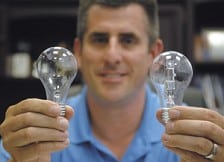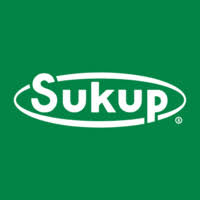The end of light(bulbs)
Dave Hein and Julie Youngblade want to prepare you for life without incandescent light


The stage was set overseas, when the European Union announced that the manufacture of general purpose incandescent light bulbs would be banned beginning in 2009.
Vaclav Klaus, president of the Czech Republic, urged people to stockpile enough of the bulbs to last their lifetimes.
Light bulb sales in Germany increased by 150 percent in the year leading up to the ban.
Here at home, the Energy Independence and Security Act of 2007 has declared lights out on the manufacture of the 100-watt incandescent bulb on Jan. 1, 2012. Bans of 40-, 60- and 75-watt bulbs begin in 2013.
For Hein, vice president of sales and operations at Stitzell Electric Supply Co. Inc. in downtown Des Moines, that means the light bulb rush is just a matter of time.
“This is the sport utility vehicle of lighting,” Hein said, referring to the high energy consumption of the popular vehicle and equally popular light bulb.
It isn’t difficult to understand the attraction of the bulb that was perfected for widespread use by Thomas Edison and can be bought today for about 25 cents apiece. Not to mention the evenly spread, bright light that emanates from the bulb’s thin filament.
“Those days are numbered,” Hein said.
As a lighting professional, Hein understands the thrifty economic thinking behind the attraction to the incandescent bulb, but he believes such thoughts are misplaced. And this is a man who is steeped in the Central Iowa history of light.
Stitzell Electric was founded in 1933 after convincing Iowa Power & Light Co. that the Sylvania Hygrade incandescent light bulbs it planned to market would not cut into Iowa Power’s profits. The utility was concerned that the bulb did not consume enough energy.
Iowa Power’s successor, MidAmerican Energy Co., promotes the use of compact fluorescent light bulbs that can use 75 percent less energy and last up to 10 times longer than an incandescent bulb.
A few years after it opened, Stitzell Electric sold the first fluorescent lighting system west of the Mississippi River. Those lights were installed at the Midland Financial Building at 206 Sixth Ave., according to company history.
These days, many of Stitzell’s customers have joined the switch to more energy-efficient bulbs, such as compact fluorescents and light-emitting diode (LED) bulbs.
Hein cautioned that for the time being, LED technology is in such flux that consumers might be disappointed with the performance of a fixture they buy today as opposed to a year from now.
“LED is just getting started; it’s definitely a new technology,” he said.
And being a bit of a light bulb buff, Hein also warns that replacement bulbs such as compact flurorescents might have a brief history because studies show that the world supply of phosphorous, which is used in their production, could be depleted by the end of this century.
Still, Hein argues that the best buy for the buck is to be found in compact fluorescents and LEDs.
Julie Youngblade, an interior designer, urges her clients to consider all of their options when lighting a home. She argues that complaints about the quality of light emitted by compact fluorescents comes from a lack of knowledge about color temperatures. A compact fluorescent bulb that has a color temperature of 2,700 to 3,500 kelvins can match what is perceived as the warm light of an incandescent bulb. As with much shopping, the key is to read the information on a box of bulbs, which should give the temperature rating, not a description, such as “warm.”
“People don’t understand that they have choices,” she said.
For now, the choices for replacing incandescent bulbs also include halogen bulbs, which are slightly less expensive to use than incandescent bulbs, as well as compact fluorescents and LEDs, she said.
Youngblade’s research on the cost of buying and using light bulbs shows that paying $1 for a four-pack of incandescent bulbs isn’t such a bright idea. Over five years, the amount of money spent to purchase and use an incandescent bulb is about $250, compared with $181 for halogen, $65 for compact fluorescent and $42 for LED.
“People haven’t gotten it yet that they are spending more to operate incandescents over compact fluorescents or LEDs,” she said.
Until they reach that understanding, Hein said he has about 200 of the 100-watt incandescent light bulbs in stock and one-day access to thousands more.











